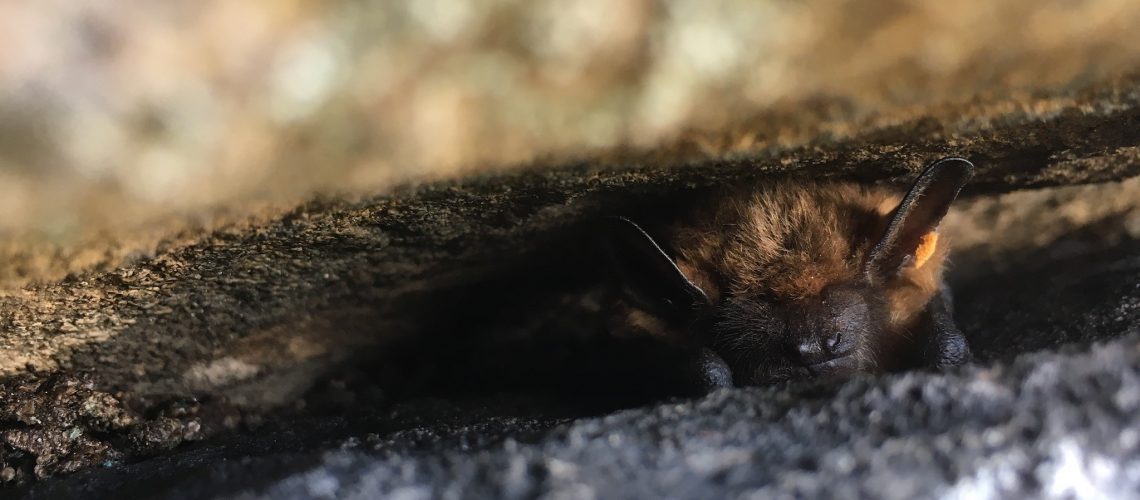Guest post by Robert Schorr, Director of Climbers for Bat Conservation
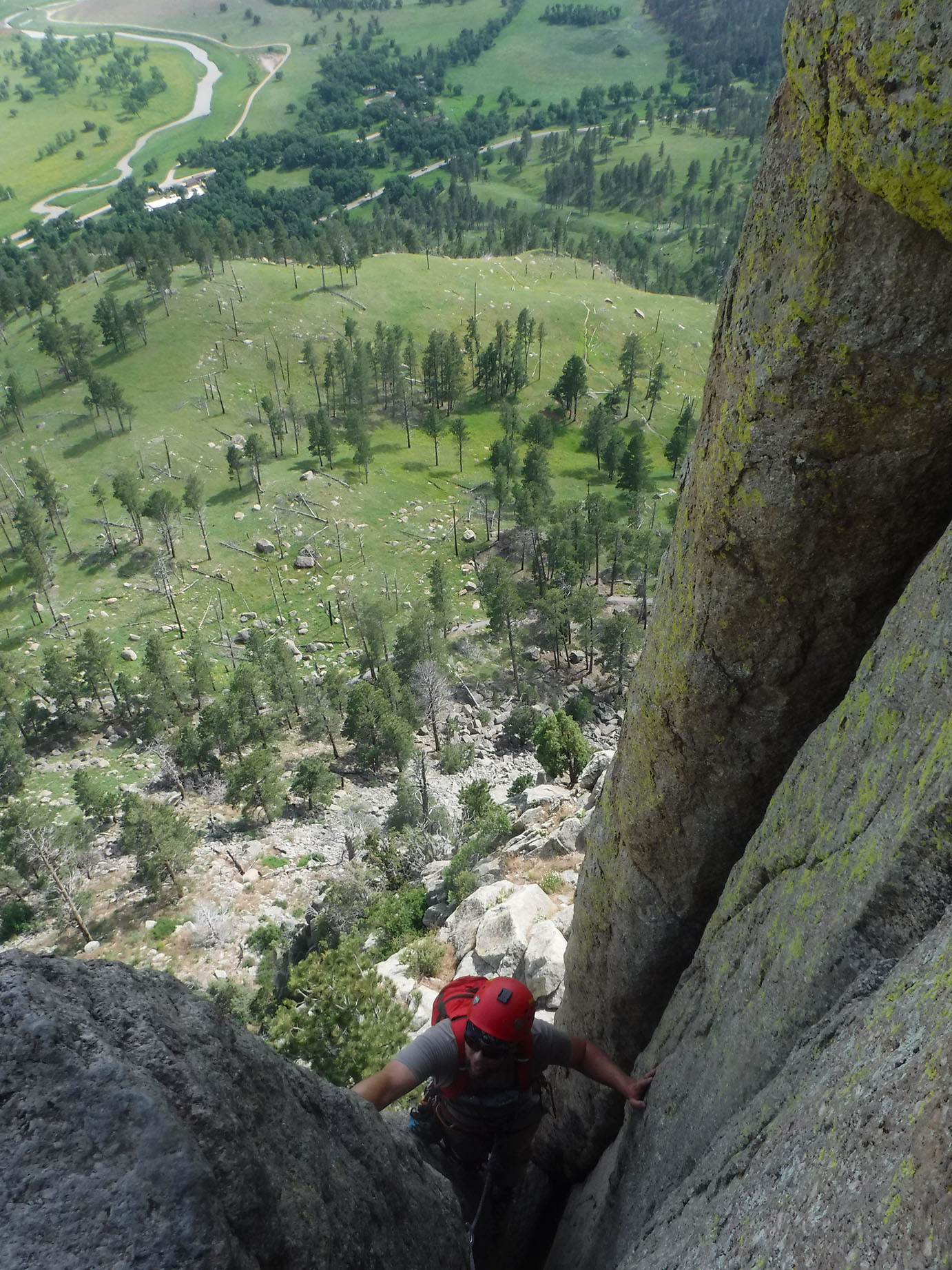
Periodically, I peek out into the void where there is a 300-foot vacancy between me and flat ground, and every chance I get I stretch my fingers back to ease the cramping in my forearms. It is mid-afternoon on the third pitch of the Durrance route up Devil’s Tower and the heat isn’t helping calm my inexperienced muscles or nerves. This route, named after a famous climber from the 1930s, is considered one of the easier ones on the Tower, but is more than I’m prepared for. Gripping sliver-width ledges, jamming fingers in cracks, leveraging body weight on rubber-fortified ballet slippers is not intuitive to me. Thankfully, there are breaks on the ascent, where one pitch ends and the next starts and at each I’m convinced that my talents lie elsewhere. It’s during these breaks that I’m reminded why I’m doing this.
There is open space below me, and I imagine what this looks like through the eyes and ears of a bat.
Rewind five years to a classroom at CSU’s Powerhouse Energy Campus, sparsely filled with bat biologists and local climbers from northern Colorado. My colleagues, Bernadette Kuhn, a climber and conservation botanist, and Shawn Davis, a climber and post-doc human dimensions specialist, and I have been awarded a SoGES GCRT grant in a novel effort to learn about bat biology from rock climbers. I think my collaborators would agree that we had some skepticism concerning rock climbers’ interest in sharing information about what they see when they climb. There was already a well-established history of conflict between climbers and biologists, as conservation interest in cliff-roosting raptors, like peregrine falcons, limited climbing access to some cliffs. With the enthusiasm of a new approach to understanding bat biology tempered by the expectation of climber wariness, we began this venture called Climbers for Bat Conservation.
Thankfully, those original conversations with climbers opened up a collaborative spirit that excited climbers and biologists, mixing tenacious environmental ethic with the data-hunger of starved bat conservation scientists.
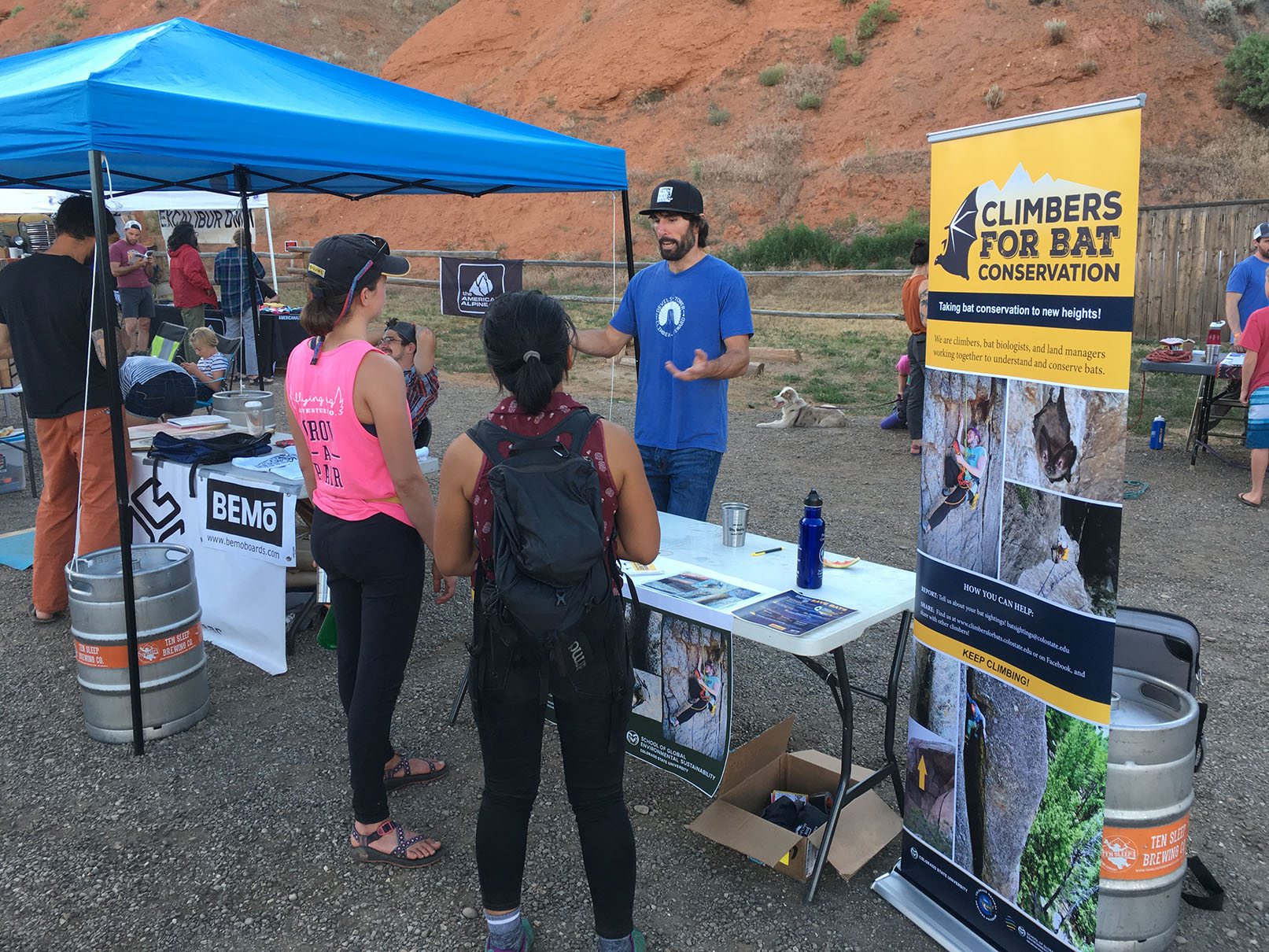
The primary motivation for this collaborative pursuit was to understand bat populations and roost habitat because bats were being lost to a new disease called white-nose syndrome (WNS). WNS is a fungal disease that arrived in New York in the early 2000s and has killed millions of bats from Nova Scotia to California. Even prior to WNS, bats were succumbing to wind-turbine collisions, habitat loss, and direct and indirect pesticide impacts, but WNS was the bull-in-the-conservation-China-shop, leaving layers of dead bats at the openings of caves and mines. What became clear to many bat biologists was that we were ill prepared to monitor bat populations away from caves and mines. We needed more information about other roosting habitat.
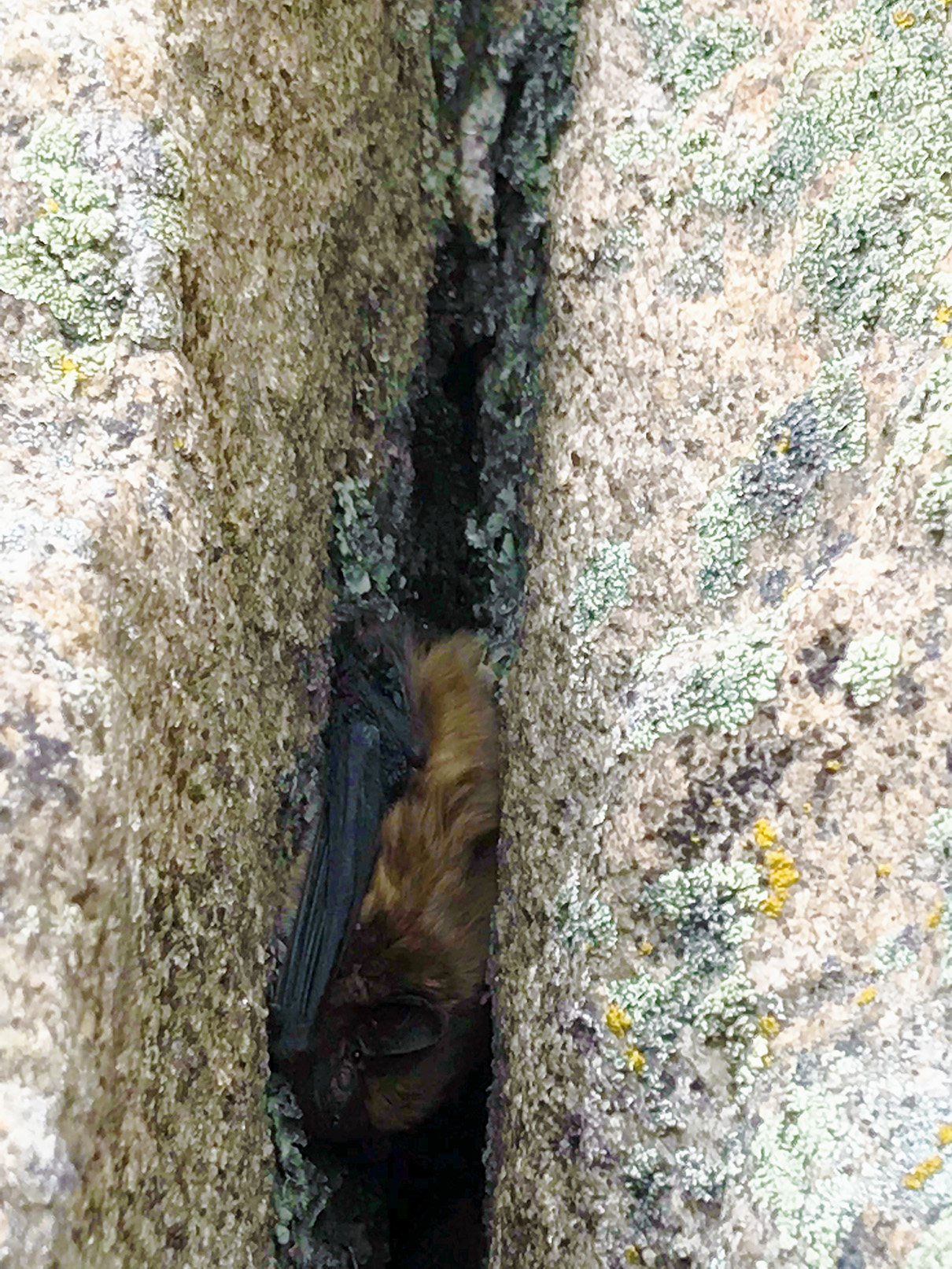
Thus, I’m 300 feet on a sheer face looking at northern Wyoming through the lens of a bat, because climbers are illustrating how biologists may want to change their point-of-view, literally, if they want to understand bats. To date, climbers have submitted over 70 observations from 13 states, one Canadian province, and three European countries. These findings show that bats use vertical terrain in ways we never appreciated, and these data provide a resource for understanding what features bats look for in a roost. For example, CBC supporter and climber-biologist Andrew Reed saw a bat along a sheer wall at 12,500 feet elevation while climbing near Long’s Peak in Rocky Mountain National Park. A bit closer to the ground, CSU student Collin Kielty saw a bat only 12 feet high while bouldering in Lory State Park. These accounts have given life to CBC by proving climbers are an untapped resource for understanding how bats use cliffs and rocks.
The CBC program has gained momentum after appearing in REI’s online Co-op Journal, Rock and Ice Magazine online, The Wildlife Society online, and the Ravenwood Media’s short-film Explorers for Bats. To increase our profile among climbers, CBC continues to reach out to the climbing community. Last fall, CBC hosted a collaborative meeting with U.S. Fish and Wildlife Service and Red River Gorge Climbers Coalition in Kentucky. Throughout the summer, CBC hosted booths at climbing festivals, like the International Climbing Festival in Lander, Wyoming. To fund such engagement activity, CBC has received grants from Petzl, Colorado Parks and Wildlife, and Wyoming Game and Fish Department. Even more importantly, CBC has collaborated with climbing advocacy group Access Fund to develop climbing management guidelines for bat conservation.
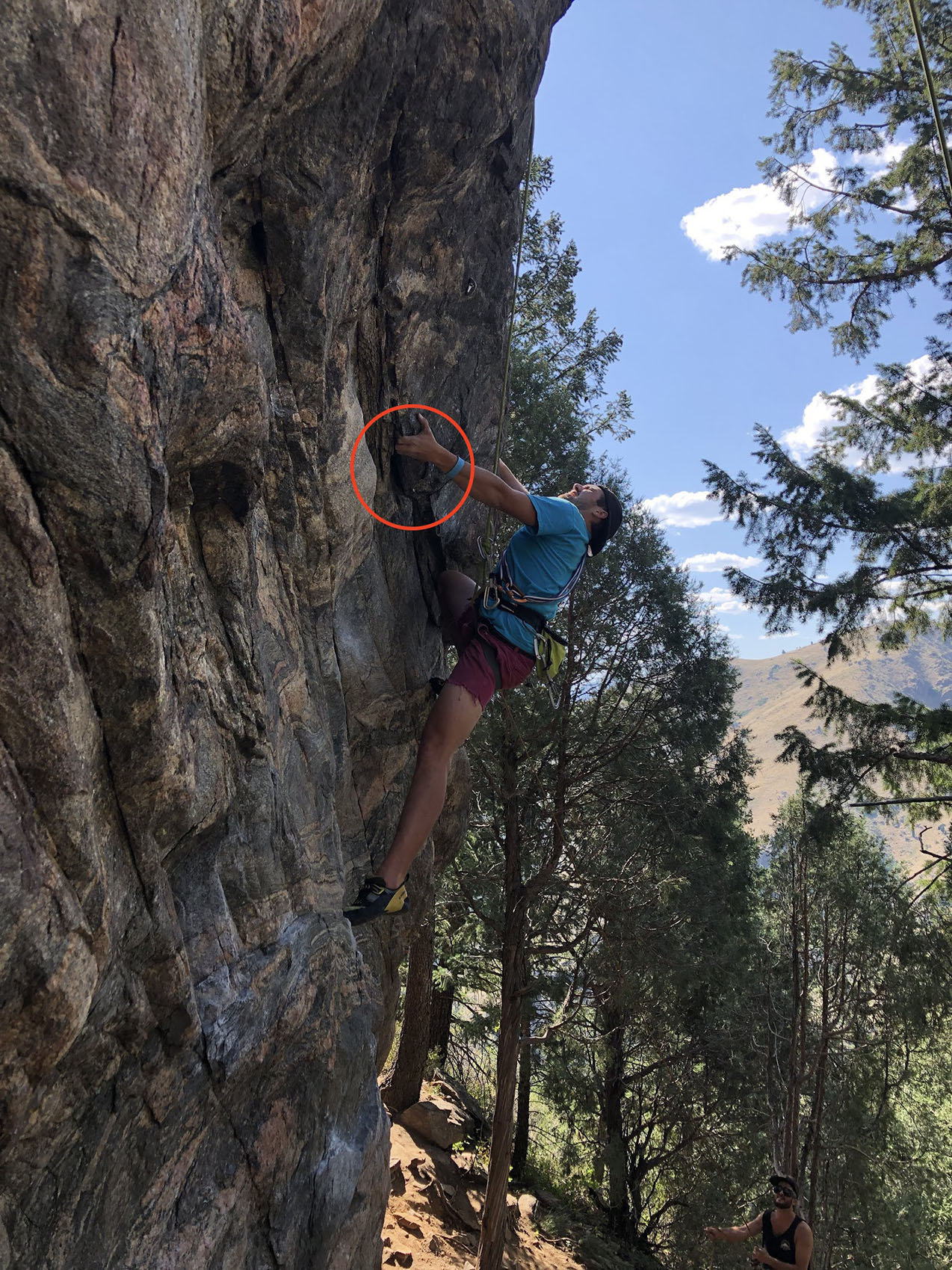
My guide on Devil’s Tower is the Monument’s own climber-biologist Phil Knecht who climbs this ancient monolith of magma looking for bats. At climbing breaks we discuss the value of surveying vertical landscapes for bats. His efforts, and those of other climber-biologists, like Yosemite National Park’s Breezy Jackson, inspired CBC to conduct bat surveys along the Front Range of Colorado.
In 2019, CSU student-climbers Bailey Hoover and Michael Matthews climbed over 40 routes along the Front Range and found two bat roosts.
While that may not seem like a lot of bats, if you extrapolate using the 27,000+ routes of Colorado, there are possibly 1,000+ climbing routes in Colorado with roosting bats.
My adventure, in the truest sense of that word, up Devil’s Tower is as much educational as it is exhausting and harrowing. For every time my poorly trained toe muscles slip along the greasy Durrance route, I gain respect for the landscape. I start to see it through the lens of an organism that needs to be and wants to be off the ground. It is perfectly fitting that this is where bats would want to be, and it’s where more biologists will be looking, with the help of climbers.
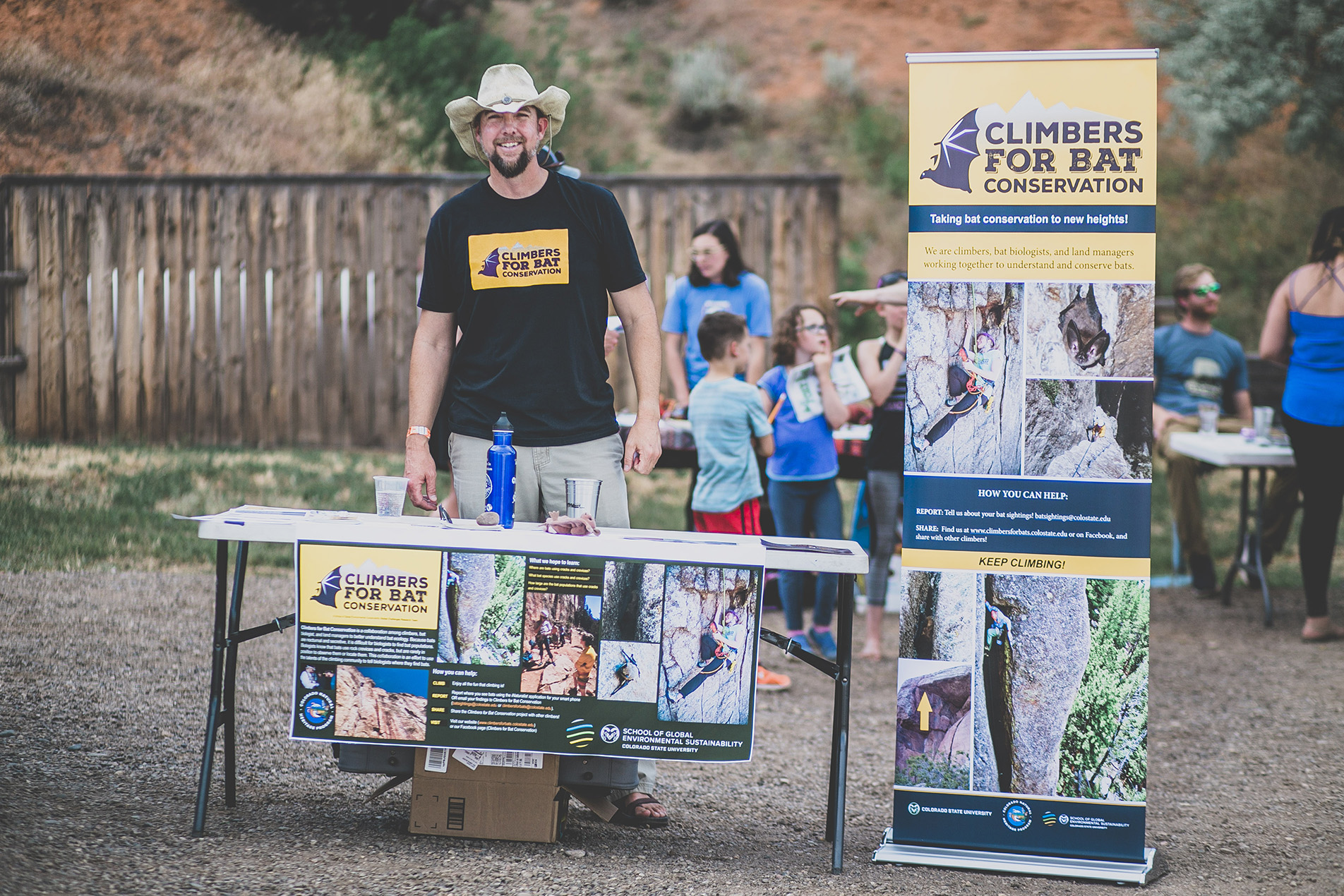
Rob Schorr is the director of Climbers for Bat Conservation, a research zoologist for the Colorado Natural Heritage Program, and a novice climber.
